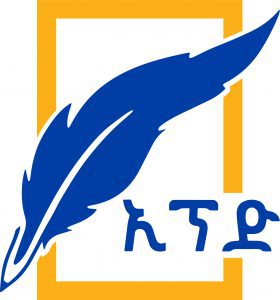
The Grand Ethiopian Renaissance Dam (GERD) is on the verge of completion, with a remarkable progress rate exceeding 98%. This monumental project is not merely an engineering feat but a transformative initiative poised to reshape Ethiopia’s economic landscape and significantly contribute to regional electrification. As Ethiopia prepares for the inauguration of the GERD in the coming months, the vision of a more prosperous future fueled by sustainable energy is becoming a reality.
Ethiopia has long aspired to bolster its industrial capacity to meet the demands of a rapidly growing population and economy. The GERD is set to play a pivotal role in this endeavor by providing a substantial and reliable source of electricity, which is crucial for industrial development. Currently, many industries in Ethiopia operate at reduced capacity due to inconsistent power supply, hampering productivity and growth. The projected output of over 6,000 megawatts from the GERD will alleviate these constraints, allowing for increased production efficiency and competitiveness.
The availability of stable electricity will serve as a magnet for both local and foreign investments, fostering the establishment of manufacturing sectors, agro-processing industries, and technology hubs. This influx of investment will create jobs, uplift living standards, and contribute to poverty reduction across the nation. The GERD embodies Ethiopia’s ambition to transition from an agrarian economy to a more diversified industrial economy, driving long-term sustainable growth.
Beyond its national benefits, the GERD holds significant implications for regional electrification. Ethiopia has the potential to emerge as a power hub for East Africa, exporting surplus electricity to neighboring countries. This initiative aligns with the African Union’s Agenda 2063, which emphasizes regional integration and cooperation in energy development.
Countries such as Sudan, Kenya, and Djibouti stand to benefit immensely from Ethiopia’s electricity exports. By enhancing regional energy cooperation, the GERD can facilitate economic growth in these nations, fostering interdependence and stability. Reliable access to electricity can also help mitigate energy poverty, particularly in rural areas where electrification rates remain critically low.
During the recent 19th Nile Day celebrations, which took place in Addis Ababa, ministers, diplomats, and journalists from Nile Basin countries praised the GERD as a transformative infrastructure project. The event, themed “Strengthening Nile Cooperation for Resilience and Shared Prosperity,” highlighted the dam’s potential to enhance regional power connectivity and economic integration.
Uganda’s Minister of State for Environment, Beatrice Atim Anywar, emphasized the importance of first-hand assessments of the GERD during her visit. Acknowledging Egypt’s concerns, she stated that the dam is vital for ensuring the equitable use of Nile waters. Anywar articulated a broader perspective, asserting that the GERD serves not only Ethiopia but also benefits downstream nations by conserving water and generating power for its citizens.
The GERD exemplifies a model for African self-sufficiency, reducing dependency on foreign aid. As countries in the Nile Basin witness the project’s progress, there is a growing recognition of the potential for similar initiatives throughout the continent. This paradigm shift could inspire other nations to leverage their natural resources for development, fostering a spirit of cooperation and shared prosperity.
The GERD’s contribution to energy generation aligns with several Sustainable Development Goals (SDGs), particularly Goal 7: Affordable and Clean Energy. By harnessing hydropower, a renewable energy source, the GERD supports efforts to transition away from fossil fuels, contributing to climate change mitigation. This commitment to sustainable energy not only addresses local energy needs but also positions Ethiopia as a leader in renewable energy on the African continent.
Ethiopia’s energy access remains a pressing challenge, with millions still lacking reliable electricity. The GERD is expected to significantly increase the national grid’s capacity, enabling the government to extend electricity access to underserved regions. This expansion will empower communities, enhance educational opportunities, and improve health services through better infrastructure.
Moreover, the dam’s contribution to energy generation is critical for rural electrification initiatives. By prioritizing investments in off-grid renewable energy solutions, the government can leverage the GERD’s output to support local energy projects that reach remote communities. This approach will ensure that even the most isolated regions benefit from the country’s newfound energy capabilities.
The GERD is more than just a source of energy; it is a cornerstone for economic integration in the Horn of Africa. By facilitating energy cooperation among countries in the Nile Basin, the GERD can help build a framework for collaborative economic growth. The potential for cross-border trade in electricity can foster stronger ties between Ethiopia and its neighbors, paving the way for a more stable and prosperous region.
The dam’s impact on local economies cannot be understated. With increased access to affordable electricity, small and medium enterprises (SMEs) can thrive, leading to job creation and economic diversification. This growth will not only benefit Ethiopia but also enhance regional economic resilience, reducing the vulnerability of countries to external economic shocks.
The Grand Ethiopian Renaissance Dam represents a monumental stride toward energy independence and economic development for Ethiopia. As it nears completion, the GERD stands as a testament to what can be achieved through vision, determination, and collective effort. Its role in powering industrialization and enhancing regional electrification is paramount, with the potential to transform not only Ethiopia but the entire Horn of Africa.
Through the GERD, Ethiopia is not only illuminating its own path but also paving the way for its neighbors, fostering a brighter future for East Africa and beyond. The dam exemplifies the power of infrastructure to drive economic growth, promote regional cooperation, and enhance the quality of life for millions. As the inauguration approaches, the world watches with anticipation, recognizing that the GERD is not just a dam, but a catalyst for change and a symbol of hope for a more prosperous and interconnected African continent.
Editor’s Note: The views entertained in this article do not necessarily reflect the stance of The Ethiopian Herald
BY MENGISTEAB TESHOME
THE ETHIOPIAN HERALD THURSDAY 3 APRIL 2025




